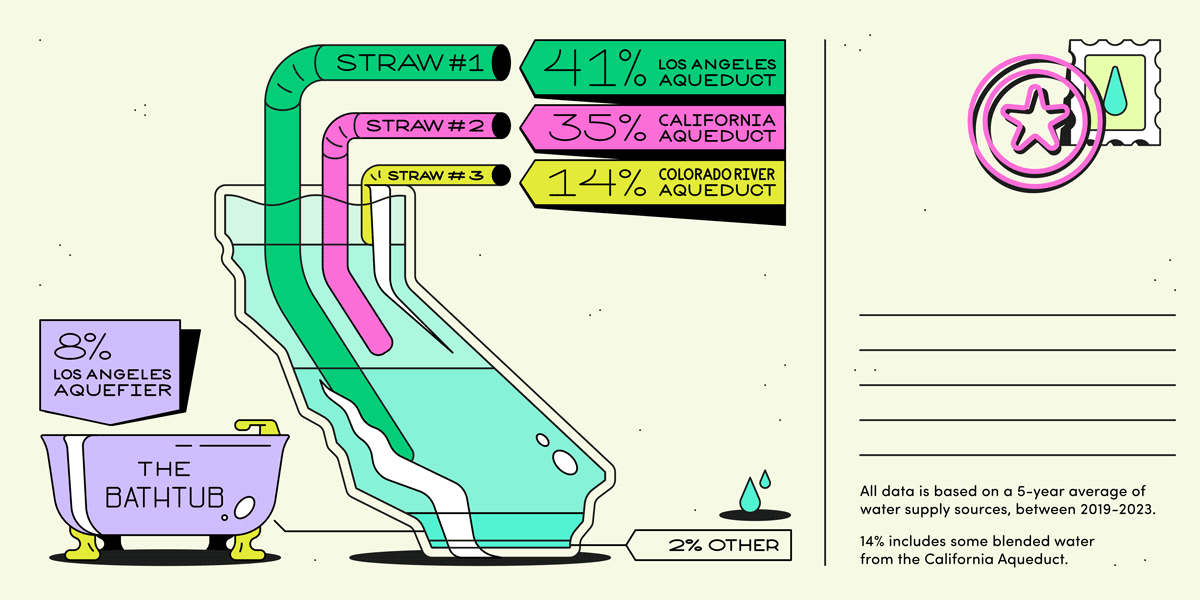‘Three Straws and a Bathtub’: Water’s Journey to Los Angeles
“The 1st Straw” (41%)
The original 233-mile Los Angeles Aqueduct was completed in 1913, bringing water from the Owens River to Los Angeles. The Second Los Angeles Aqueduct, completed in 1970, added 50% more water capacity and 189 miles of infrastructure.
“The 2nd Straw” (35%)
The 444-mile California Aqueduct, completed in 1974, carries surface water from the northern Sierras to Southern California. A portion of that water is stored in Pyramid Lake and Castaic Lake for distribution to Los Angeles and surrounding cities.
“The 3rd Straw” (14%) *
The Colorado River Aqueduct, completed in 1941, has a capacity of 1 billion gallons a day — California’s full allotment under the Colorado River Compact. Most of California’s share is used to irrigate crops, but the aqueduct is also a vital source of water for urban Southern California.
“The Bathtub” (8%)
The Los Angeles aquifer is a system of local groundwater basins located in neighboring valleys. The water supply is replenished through natural recharge (rainwater), artificial recharge (imported water) and spreading grounds (26 conservation basins carved out by the U.S. Army Corps of Engineers in the 1930s).
The Remainder (2%)
Comes from nearby rivers, desalination and recycling.




